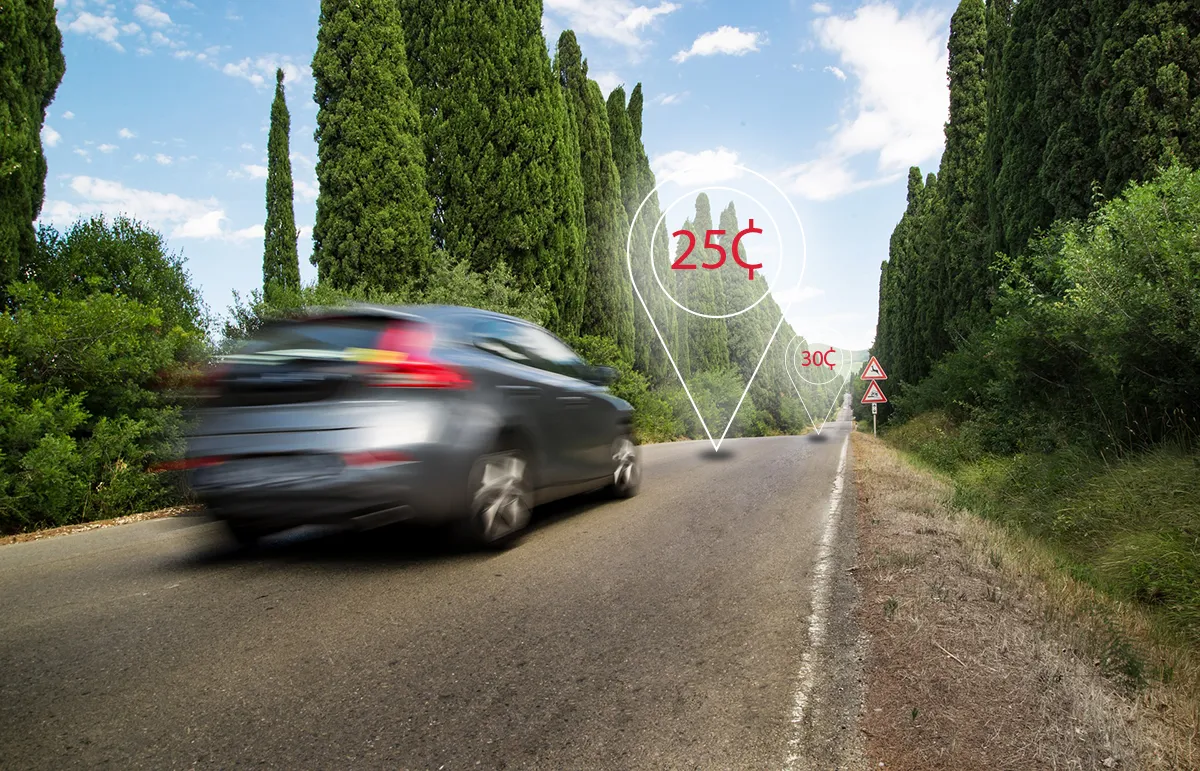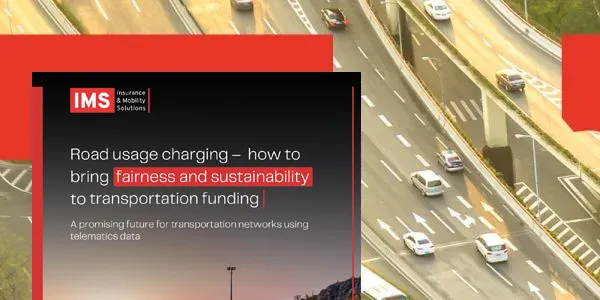The question of how to pay for the construction and maintenance of roads, bridges, and surface transportation systems has traditionally been answered through fuel taxes, toll booths, and special fees paid by drivers. Globally, however, these methods of funding no longer meet the needs of the government agencies and organizations responsible for ensuring well-maintained roadways and supporting infrastructures, creating a serious gap in funding that requires rethinking the basic premises behind how to charge for use of the road and build a sustainable model for the future as the types of vehicles, the driving patterns of individuals, and the roads and highways require ongoing maintenance and repair. Although the underlying conditions are different in various regions, as exemplified across the US, the UK and Europe, the regional challenges encountered can often be addressed through the application of telematics data capture and use. Programs based on a pay-per-mile basis for drivers are springing up worldwide and achieving notable successes.
US Leads in the Adoption of Road Usage Charging

The nature of transportation worldwide is steadily changing with electric vehicles and hybrid-electrics becoming increasingly popular alternatives to fossil-fuel powered vehicles. The US has taken a proactive stance in response to the evolution of transportation and vehicle use, exploring sustainable ways to ensure long-term funding that are both fair to drivers and encourage increased use of alternatives to fossil-fueled vehicles.
The Edison Electric Institute marked a milestone in 2018: 1 million electric vehicles in operation on US roads. The organization also projected that by early 2021 there would be another million electric vehicles sharing the roads and by 2030 this figure would reach 18.7 million.¹ Many of these vehicles use no gasoline or reduced volumes of gasoline, so vehicle owners aren’t contributing much, if anything, to road building and maintenance.
Improvements in vehicle fuel efficiency have also reduced the level of revenues collected from fuel taxes. As the number of vehicle miles traveled increases, gas consumption decreases due to better efficiency.
Other challenges add to the currently unsustainable transportation funding in the US, including a steep decline in the Federal Highway Trust Fund balance, which showed a $33 billion-dollar surplus in 2019. This is projected to drop to a $5.9 billion-dollar shortfall for the Highway Account by 2022, if additional funding is not obtained. This shortfall is on course to continue, reaching a $134 billion-dollar deficit by 2029.² These Congressional Budget Office projections do not incorporate the disruption caused by COVID-19, which has resulted in reduced vehicle usage, lowering tax revenues even further as more individuals work from home and drive less. A steady trend toward work-from-home situations is taking place among many businesses, which is likely to exacerbate the revenue shortages already occurring.
Another factor and area of uncertainty are Corporate Average Fuel Economy (CAFE) standards, set by the NHTSA to mandate the distance vehicles can travel on a gallon of fuel.³ A rollback of more aggressive Obama-era CAFE standards has put into question manufacturer fuel-efficiency targets, although the change in administration has indicated a continued environmentally positive trend toward improved fuel efficiency.
UK and Europe are Actively Exploring Road Usage Charging Opportunities

Transportation funding in Europe is somewhat different than the US, with a greater percentage of road building and maintenance funds being derived from a general pool with funding more directly tied to inflation levels. Across Europe, because of the practices in use, the link between fuel and road taxes is less apparent.
“Road charging can also be a useful instrument to generate new sources of revenue to help develop Europe’s vital infrastructure, as well as cleaner, more energy-efficient modes of transport. ”⁴
– European Commission on Mobility and Transport
The European Union promotes taxation and infrastructure policies supporting two key principles:
- User pays
- Polluter pays
Within this framework, which has been designed to maintain and develop the trans- European infrastructure network, Member States are encouraged to adopt practices that recognize the external costs associated with road usage, as well as those factors impacting the environment or society. By emphasizing the efficient use of transportation infrastructures, the EU want to reduce congestion and avoid time lost in traffic bottlenecks or other delays.
In general, today there is a keen desire to institute policies across both the EU and UK that are both equitable for the population of drivers and respect environmental concerns and reasonable traffic management goals. As a secondary effect, road usage charging programs under consideration typically discourage short local vehicle trips (such as picking up items from a nearby store) to minimize carbon emissions and lower traffic congestion in cities.
Much as has been the case in US, the UK is facing a similar shortfall in funding because of shifts in vehicle types and use, which is estimated to cause a £40bn deficit within a decade because a proposed ban on the sale of fossil-fuel powered vehicles by 2030. As reported by the Institute of Fiscal Studies, taxes on fuel and car purchases annually generate £40bn. A current proposal to offset this deficit is a national plan for road pricing with motorists paying directly for road usage.
COVID-19 has also had a dramatic impact on the UK’s fuel tax revenues, which dropped by more than half during April and May 2020 and are expected to plunge by £5bn by the end of 2020, according to the Office for Budget Responsibility.⁵
Public interest in road charging is increasing to the point that, according to Transport Network, the head of the UK’s top highways contractors association said, “Research shows that public acceptability of the concept of road pricing has [increased] to the low 30s. In public policy terms if something gets above 40% acceptability it becomes practical to implement as public policy.”
Telematics data offers a promising technology road map for setting up programs that equitably charge drivers in relation to real-world road use. Data captured from vehicle operations and locations can supply the information needed by different jurisdictions to implement road usage charging.

White Paper
Road Usage Charging – How to Bring Fairness and Sustainability to Transportation Funding
A Promising Future for Transportation Networks using Telematics Data
1. EEI Celebrates 1 Million Electric Vehicles on US Roads. Edison Electric Institute. November 2018.
2. Highway Trust Fund Accounts – CBO’s Baselines as of March 6,2020. Congressional Budget Office. https://www.cbo.gov/system/files/2020-03/51300-2020-03-highwaytrustfund.pdf
3. Corporate Average Fuel Economy. NHTSA. April 2020. https://www.nhtsa.gov/laws-regulations/corporate-average-fuel-economy
4. Road Charging. European Commission. January 2020. https://ec.europa.eu/transport/modes/road/road_charging_en
5. Overview of the November 2020 Economic and fiscal outlook. Office for Budget Responsibility. November 2020. https://obr.uk/overview-of-the-november-2020-economic-and-fiscal-outlook/



